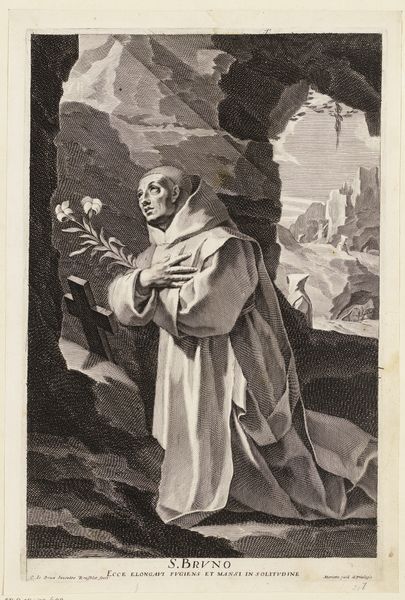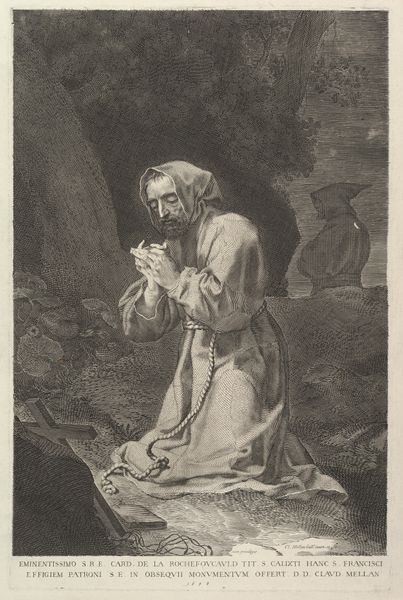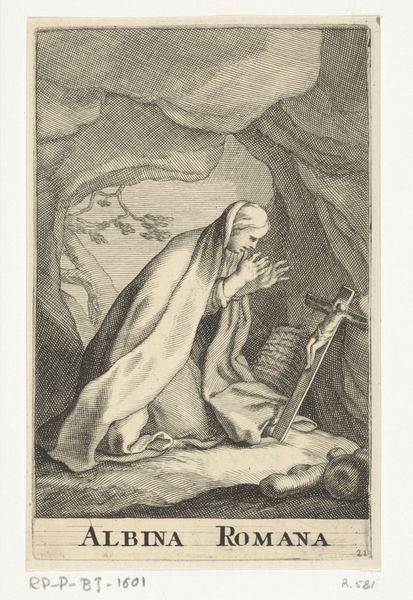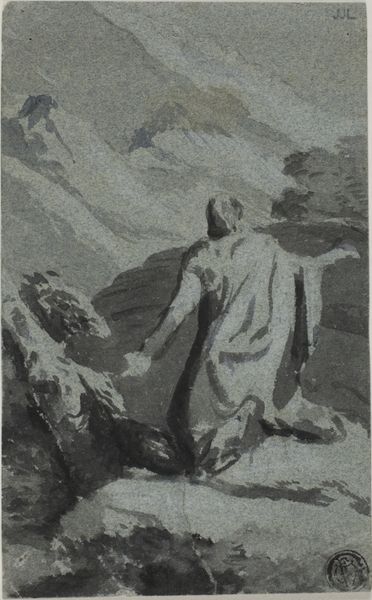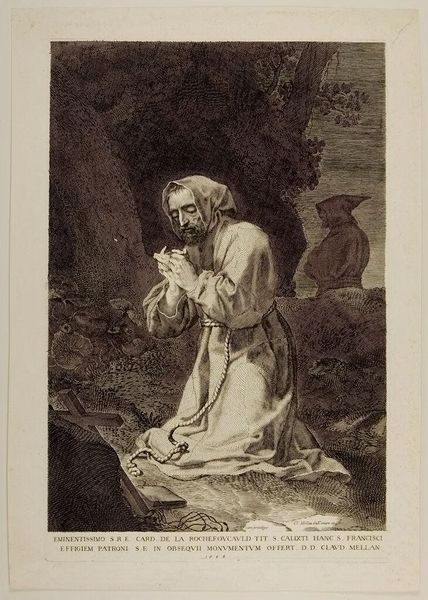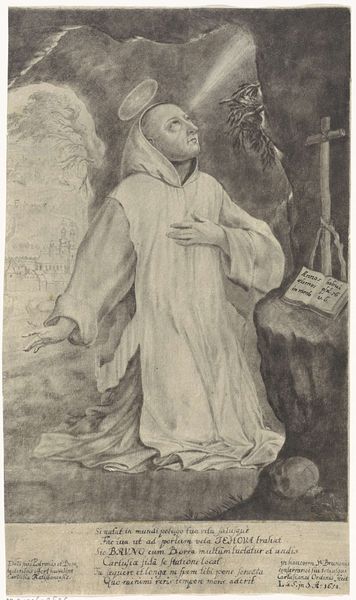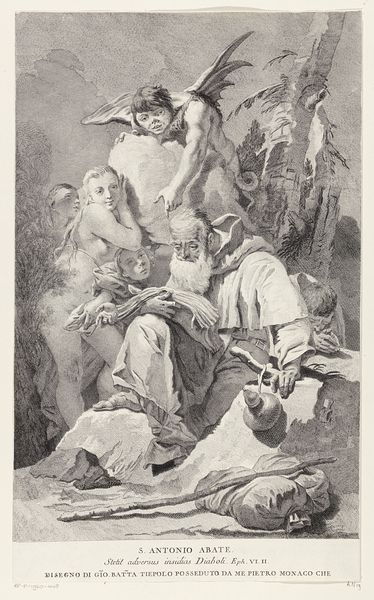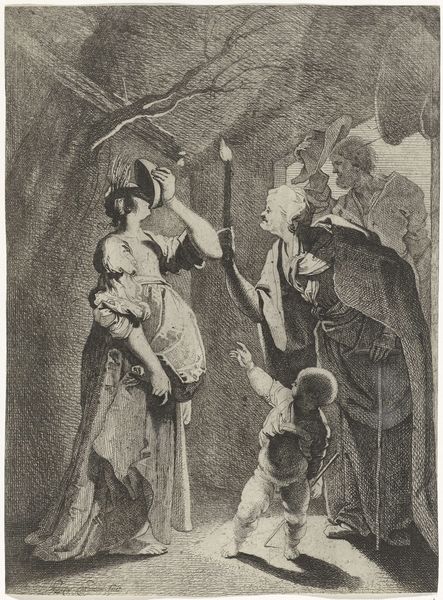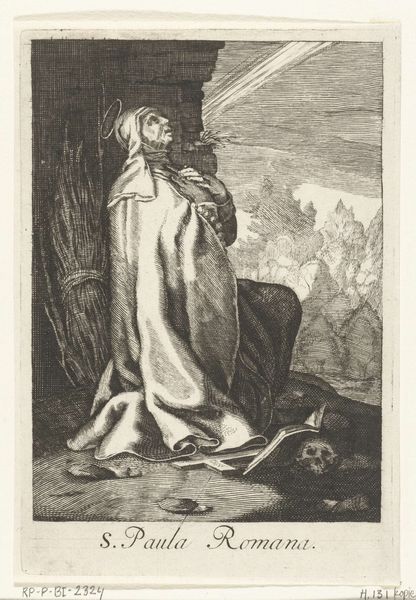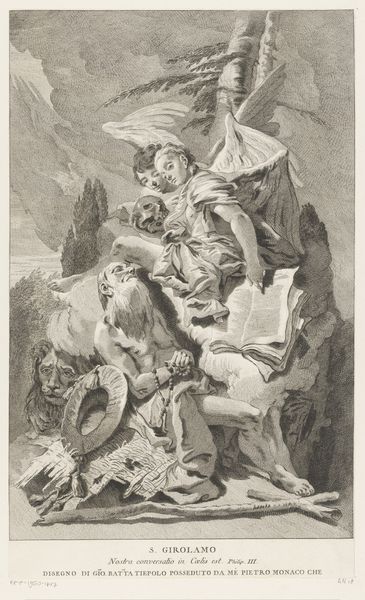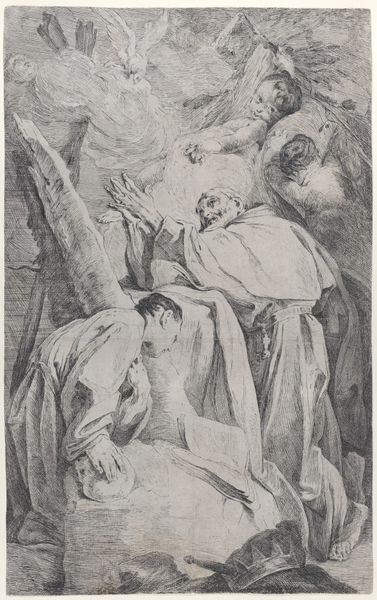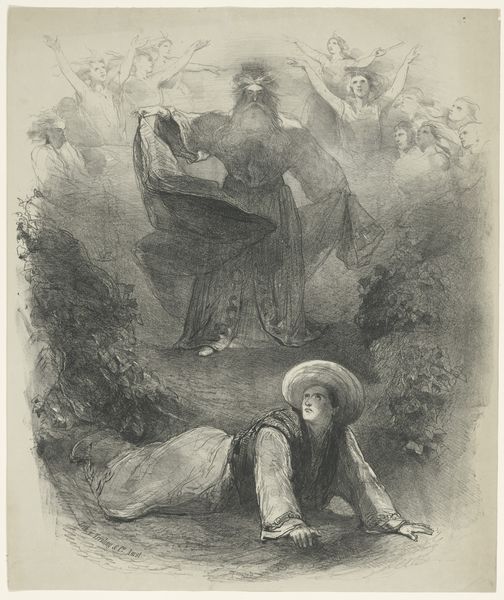
drawing, print, engraving
#
portrait
#
drawing
#
baroque
# print
#
dog
#
landscape
#
cross
#
men
#
history-painting
#
engraving
Dimensions: sheet: 17 3/4 x 11 7/16 in. (45.1 x 29 cm)
Copyright: Public Domain
Curator: What immediately strikes me about this image is its almost stark simplicity, the overwhelming impression of light on fabric against a shadowed, textured background. It's rather luminous, isn't it? Editor: Absolutely. We’re looking at "St. Bruno," a Baroque engraving by Claude Mellan, likely completed sometime between 1600 and 1688. Currently it resides here at the Metropolitan Museum of Art. The process here is central, really. Look how Mellan used engraving to mimic light itself. Curator: Light made tangible! He certainly achieved that ethereal quality. It's fascinating how the details, or lack thereof, really emphasize the monk’s inner contemplation, his spiritual communion. Even his humble garments seem illuminated by grace. It almost makes you feel like an intruder. Editor: Exactly! But think of the labor. Each line, deeply considered and carefully etched, serves a function, creating form, value, texture. The tools themselves dictate a visual language, which serves the purpose of depicting St. Bruno in communion, yes, but within this landscape! Curator: And a somewhat bleak landscape at that! See how that dog’s expression is practically lugubrious? Almost comical, yet rather endearing. What about the almost casually-depicted skull there in the shadow? Does the bleakness there somehow heighten the Saint's inner peace and contemplation? Editor: Precisely! The imagery has both sacred and profane, creating tension to engage in religious, even social and political discussions. Who had the resources, what type of labour did he command and under which social forces or patrons created an art that depicts St Bruno. Curator: In any case, I do appreciate how such an unadorned style leaves space for personal interpretation. It feels remarkably immediate for a piece made so long ago; not many artists were thinking about the interiority of everyday humans back then. Editor: Yes, considering Mellan's skills and artistic intent helps us fully grasp the choices that shaped this print. To examine how the final materials, process, and image served social practices that created meaning in a time very unlike ours.
Comments
No comments
Be the first to comment and join the conversation on the ultimate creative platform.
